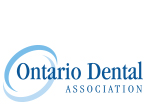Good preventive oral care at home can save you money—it can also save your teeth, freshen your breath, and improve your oral and overall health.
The Six Steps of Preventive Care
- Brush at least twice a day.
- Floss once a day.
- Limit sugary snacks and drinks (including fruit juices).
- Don't smoke or use any tobacco products.
- Have an examination as often as is recommended by your dentist. The frequency will be based on your individual needs and the risk of oral diseases.
- Have your teeth cleaned and polished as per the schedule recommended by your dentist.
Examinations—Once, Twice or More per Year?
Examinations are an important part of maintaining healthy teeth and gums and the frequency should be determined in consultation with your dentist. Some people need more frequent examinations while others can have a yearly exam.
Back to the Basics—A Refresher on Brushing and Flossing
Brushing and flossing remove the bacteria that promote tooth decay and the plaque that can cause gum disease. A reminder of what works best:
- Ideally, brush after every meal—but at least twice a day including just before bed.
- Use a soft-bristle brush with rounded bristles, small enough to reach your back teeth.
- Use a toothpaste with fluoride—look for the CDA Seal.
- Brush for at least two minutes.
- Don't forget to gently brush your tongue.
- Get a new toothbrush if yours looks worn, is more than three months old, or if you've had a cold (bristles can harbour germs that may re-infect you).
- Flossing is a must—otherwise more than a third of your tooth surface is not getting cleaned. After flossing, roll it up in a tiny ball and put it in the garbage. Never flush floss down the toilet.
- Consider an interdental cleaner or proximal brush for cleaning between your teeth instead of floss if you have wide spaces between your teeth, wear braces, or have had gum surgery.
- Brushing and flossing aren't complicated, but technique does matter. Ask your dentist or click here for a visual guide.
Watch Your Mouth!
Preventive care also means being alert for signs of tooth decay, gum disease, and oral cancer. If you see any of the warning signs listed below, contact your dentist right away.
Tooth decay
- sensitivity to heat, cold, sweetness, or pressure
Periodontal disease (gum disease)
- red, shiny, puffy, sore, or sensitive gums
- bleeding when you brush or floss
- persistent bad breath
Oral cancer
- bleeding that you can't explain
- open sores that don't heal within 7 to 10 days
- white or red patches
- numbness or tingling
- small lumps or thickening on your gums, the sides or bottom of your tongue, the floor or roof of your mouth, or the inside of your cheeks
You and Your Dental Team—Working Together
By practising good preventive care at home, you are working together with your dentist to safeguard and improve your oral health. Click here to meet the rest of your oral health care team members.











